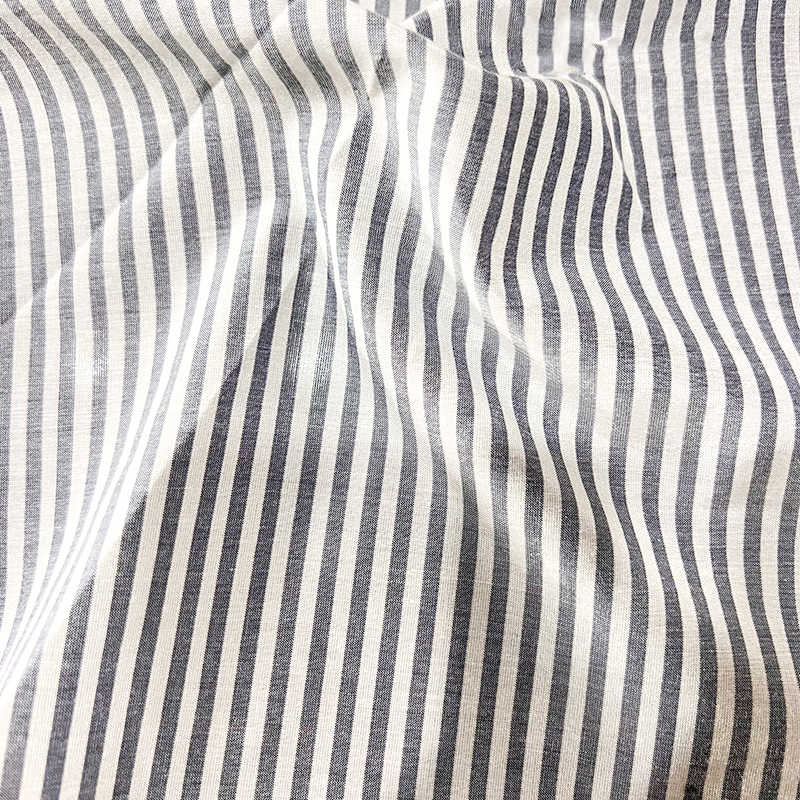Industry knowledge
The production steps of Mulberry Silk Fabric
The production of
Mulberry silk fabric involves several steps, from silkworm rearing to the final weaving of the silk fabric. Here are the general steps involved in the production of Mulberry silk fabric:
Silk Filament Spinning:
The unraveled silk filaments are collected and twisted together to form a stronger, more usable silk thread. Multiple silk filaments are combined to create a single thread, which provides strength and consistency to the resulting silk fabric.
This spinning process may be performed manually or by using automated machinery, depending on the scale of production.
Weaving:
The spun silk threads are then used to weave the Mulberry silk fabric. Traditional weaving methods involve the use of handlooms or power looms, where the threads are interlaced vertically (warp threads) and horizontally (weft threads) to create the fabric.
The weaving process can be customized to create different patterns, densities, and textures based on the desired end product.
Finishing:
After the fabric is woven, it undergoes various finishing processes to enhance its appearance, softness, and durability. These processes may include washing, bleaching, dyeing, printing, or adding additional treatments for specific effects or finishes.
The finished silk fabric is then inspected for quality control, and any necessary repairs or adjustments are made.
The Classification of Silk Blend Fabric
Here are some common classifications for
silk blend fabrics:
Silk Blend: This refers to any fabric that combines silk with one or more other fibers. The blend can vary in terms of the percentage of silk and the type of fiber used. Common silk blends include silk/cotton, silk/wool, silk/linen, and silk/polyester.
Silk/Cotton Blend: This blend combines silk and cotton fibers. It offers the luxurious feel and luster of silk along with the comfort, breathability, and durability of cotton. Silk/cotton blends are often used in clothing, linens, and upholstery.
Silk/Wool Blend: This blend combines silk and wool fibers. It combines the softness, warmth, and insulating properties of wool with the smoothness and luster of silk. Silk/wool blends are commonly used in high-end garments, suits, and upholstery.
Silk/Linen Blend: This blend combines silk and linen fibers. It brings together the strength, durability, and coolness of linen with the luxurious sheen and drape of silk. Silk/linen blends are popular for summer clothing, draperies, and home textiles.
Silk/Polyester Blend: This blend combines silk and polyester fibers. It combines the natural beauty and luster of silk with the durability, wrinkle resistance, and affordability of polyester. Silk/polyester blends are commonly used in various applications, including apparel, upholstery, and home decor.
How to maintain luxury Mulberry Silk Fabric
Washing:
Handwashing: It is generally recommended to handwash Mulberry silk fabric. Fill a basin with lukewarm water and add a gentle detergent specifically formulated for delicate fabrics.
Gently agitate the water to create suds. Submerge the silk fabric and swirl it around gently for a few minutes.
Avoid rubbing, wringing, or twisting the fabric, as this can damage the delicate fibers.
Rinse the fabric thoroughly with cool water until all soap residue is removed.
Avoid using bleach or harsh chemicals, as they can damage the silk.
Drying:
After washing, avoid wringing out the silk fabric. Instead, gently squeeze out excess water or roll it in a clean towel to absorb moisture.
Lay the silk fabric flat on a clean towel or hang it in a shaded area to air dry. Avoid exposing silk to direct sunlight, as it can cause color fading.
Do not tumble dry silk fabric, as it can lead to shrinkage or damage.
Handling and Care:
Avoid exposing silk fabric to sharp objects or rough surfaces that could cause snags or tears.
Keep silk fabric away from harsh chemicals, perfumes, and cosmetics, as they can potentially stain or damage the fabric.
If a spill or stain occurs, address it promptly by blotting gently with a clean, white cloth or paper towel. Avoid rubbing, as it can spread the stain further.


 中文简体
中文简体 Français
Français Deutsch
Deutsch italiano
italiano


























